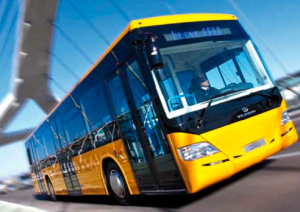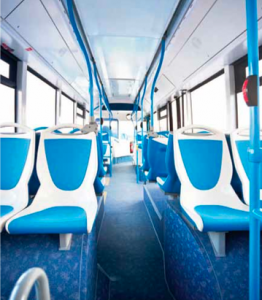
The diesel-electric and CNG-electric low-floor hybrid bus solutions from Tata Hispano in collaboration with Tata Motors Ltd. (TML) represent two versions of technology for low CO2 urban mobility.
TML Hybrid solutions combine the best in industry traction system from Siemens and battery packs from A123 Systems along with the company’s proprietary control system to maximise the benefits of hybrid technology.
The technology benefits include an option of diesel and CNG engine; proven electric traction system from Siemens, used in more than 2,000 buses worldwide; full electrical mode possible for zero emission operation for short distances; an electronic braking system (EBS) which seamlessly integrates regenerative energy capture to maximise fuel efficiency; and a common hybrid drive for diesel-electric and CNG-electric and the same extendable to pure electric, CNG micro turbine and hydrogen fuel cell buses.
Over 30 per cent fuel economy improvement and significantly lower emissions are due to regenerative braking through which energy normally dissipated during braking is captured in batteries and reused; the engine operated always at the best efficiency point, very low transparent operation of engine, and due to electrically driven auxiliary systems.
Minimal penalty in payload is on account of the advanced high efficiency Lithium-Ion batteries, the lower noise level inside and outside the vehicle is due to the downsized engine. Versatile energy management strategies can be tuned to specific customer requirements, depending on the operations.
How the system works
For a series hybrid vehicle, the engine is not connected to the driveline. Instead it just runs a generator which charges the battery pack at a steady power. The battery pack gives electrical energy to the motor which, in turn, gives the traction power.
Since the traction motor in a series hybrid vehicle is much larger in capacity than for a parallel hybrid vehicle, the amount of brake energy is higher. Besides, the engine operates on a constant speed and load mode, which maximises the engine efficiency, irrespective of large variation in the vehicle speed and frequent stops and starts.
Thus, this configuration is more suited for city buses which experience frequent stops and heavy traffic conditions. Parallel hybrid configuration is more suited for intercity buses and passenger cars which see a mix of urban and highway traffic.